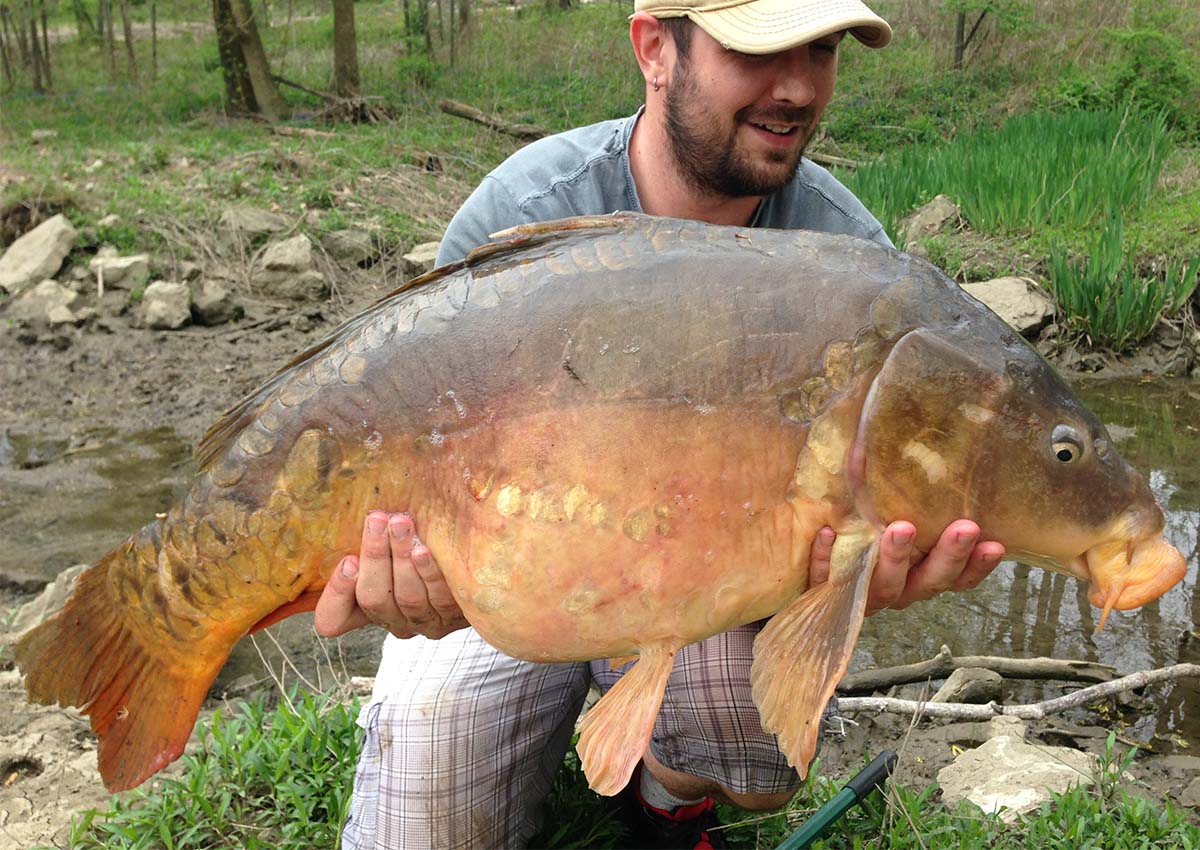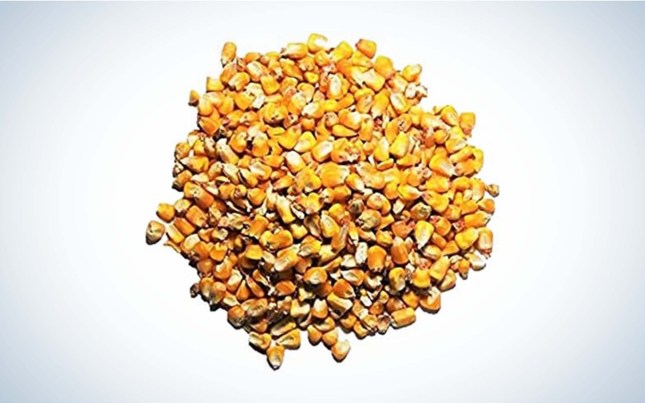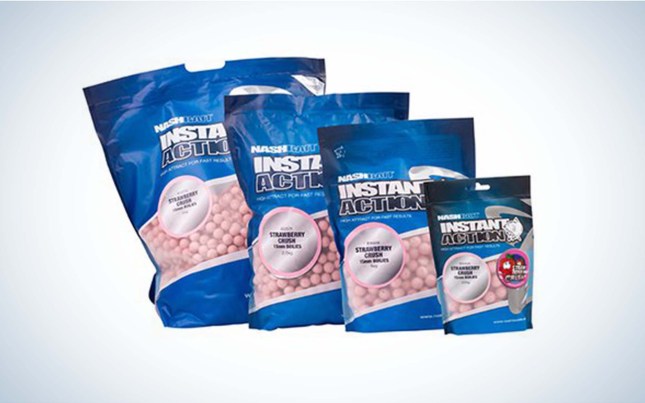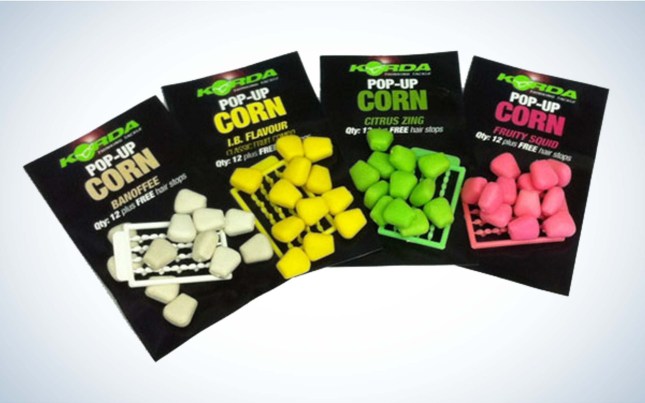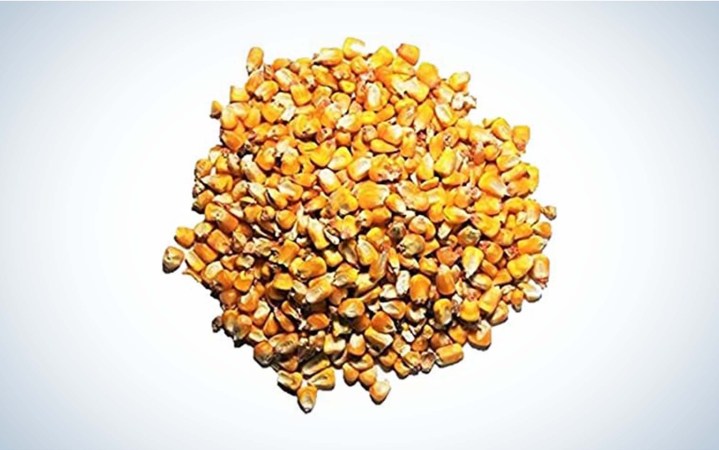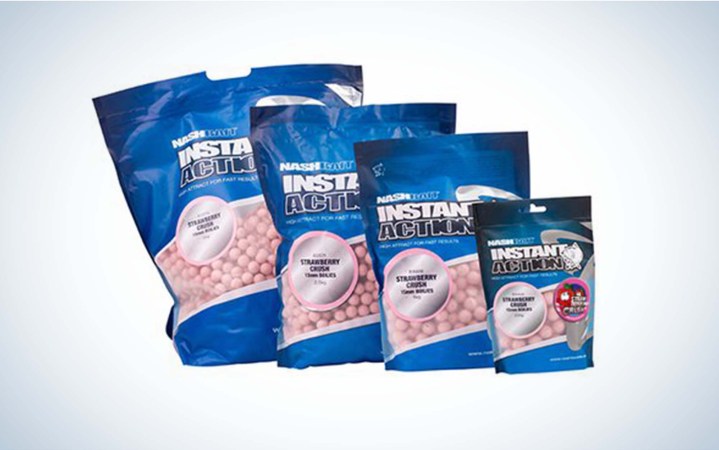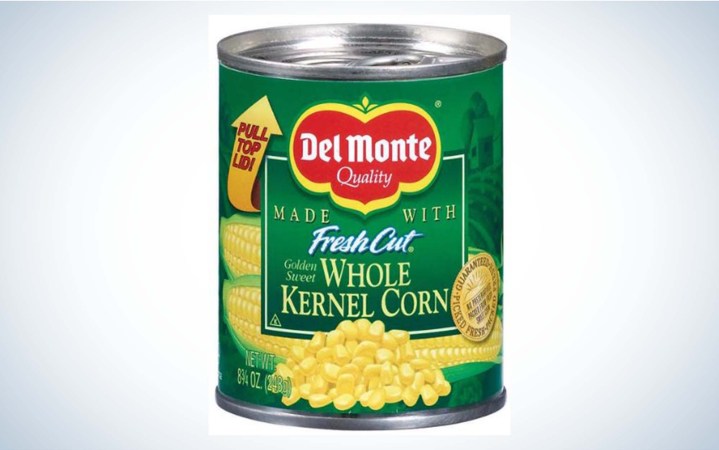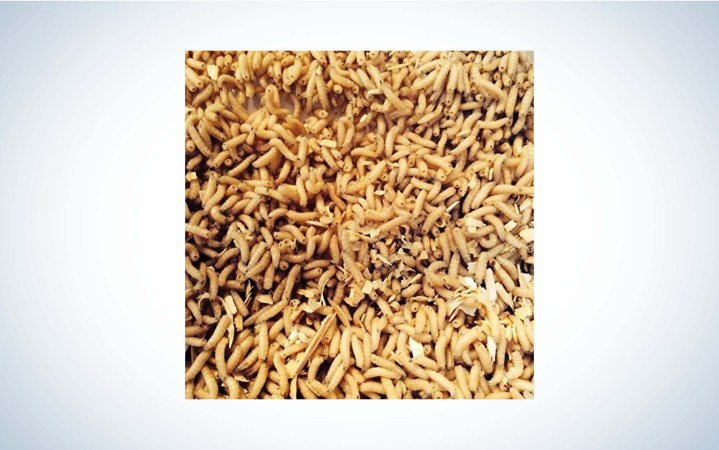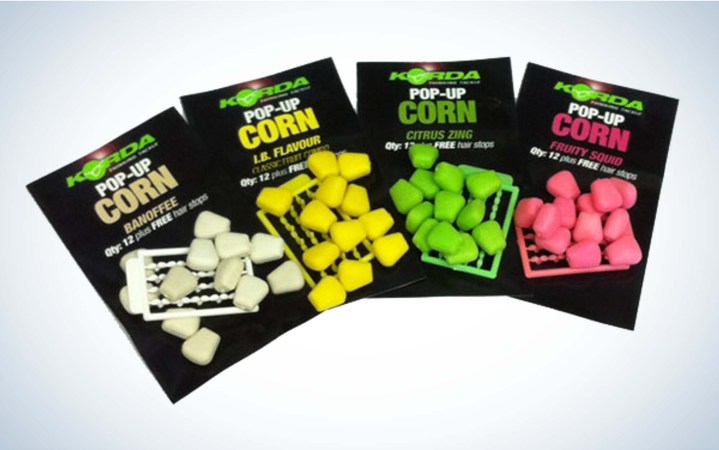We may earn revenue from the products available on this page and participate in affiliate programs. Learn More ›
“Trash fish” inhabit a wide variety of environments, and the right carp bait will depend on the type of water and current conditions. These much-maligned creatures have long been treated as nothing more than dull, slimy intruders on our nation’s waterways. Despite their lowly reputation, carp are big, strong, and shockingly intelligent fish that are easily accessible to anglers most anywhere in the country. Carp’s expansive territory causes bait and fishing methods to differ extensively. The type of presentation you use in settings such as shallow rivers, still water, and weedy bottoms can vary drastically, and you need to consider them all in order to have success.
I sat down with dedicated lifelong carp angler, Aaron Huffman, to discuss the best baits for catching monster carp. Huffman has been practicing traditional carp fishing methods for most of his life. Thankfully, he was willing to share a few of his best carp baits, tips, and techniques.
- Best Overall Bait: Boiled, Flavored Field Corn
- Best Pre-made Natural Bait: Nash Boilies
- Best Quick and Easy Bait: Del Monte Canned Corn
- Best Live Bait: Maggots, Mealworms, Wax worms
- Most Durable Artificial Bait: Korda Pop-up Maize
Best Overall Bait: Boiled, Flavored Field Corn
Best All-Around Bait
Boiled, Flavored Field Corn
Why It Made the Cut
Huffman swears by his most tried and true: field corn boiled in Kool-Aid. It is incredibly tough, customizable, cheap, and easy to find. While many people think carp are attracted to anything smelly, he says sweeter flavors consistently get more attention than savory or stinky baits.
Key Features
- Cheap
- Found at any farm supply or general store
- Extremely durable
- Customizable flavor and presentation
Pros
- Inexpensive
- Durable
- Easy to find
- Catches bigger fish
Cons
- Requires a good amount of prep work
- Specific rigging technique
Product Description
Despite its simplistic description, properly preparing and rigging boiled field corn is actually quite a detailed task.
After you’ve acquired a bag of whole kernel feed corn and soaked it in a bucket of water overnight, you’ll need to boil it over high heat for 1.5 hours with your flavoring until the corn can be threaded on a hook without splitting. Huffman notes you can buy carp-specific concentrates or spice it up a bit with vanilla, sugar, and salt, but classic Kool-Aid will do the job on its own.
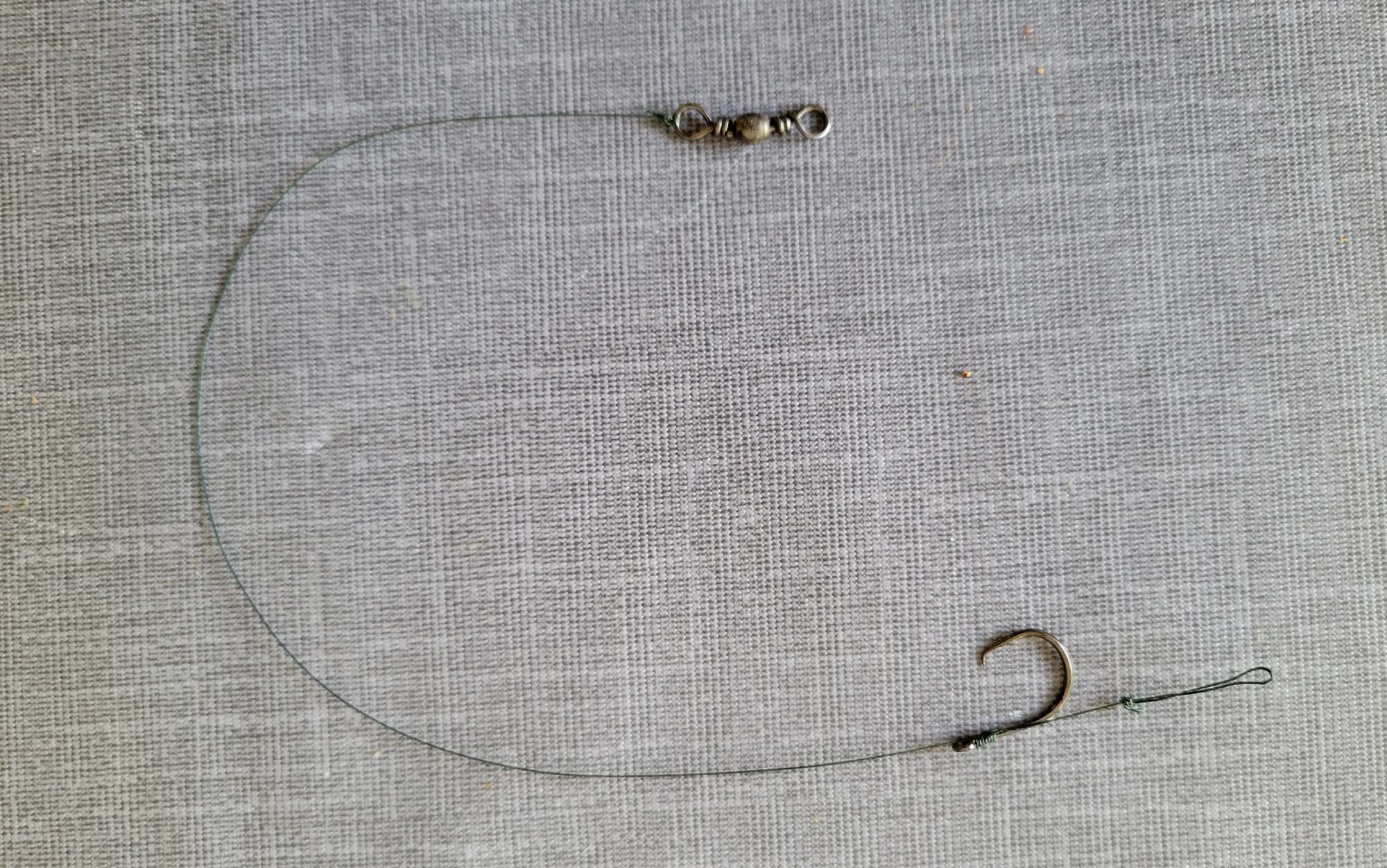
Once the corn has cooled overnight, you’ll have a limitless supply of the best carp bait around. However, using it properly is still key to success. The corn should be rigged using a method called a hair rig, which requires leaving an extra long tag end on a snelled hook. Hook size and style vary from angler to angler, but Huffman prefers size two or four circle hooks. He acknowledges that this is personal preference, and most anglers in the carp world likely find it odd and suggest using a smaller traditional bait hook. You’ll snell the hook onto a strand of 20-30 pound braided line about a foot long. Once the hook is snelled and ready to go, you’ll use a crochet needle or similar small hook and thread 2 to 3 kernels of corn onto it.
Thread the tag end of line onto the hook and pull it back through the corn, leaving a string of kernels hanging just below the bend of the hook. The last step is to add a stopper below the corn to prevent it from sliding off the hair rig. If you’re fishing a weedy or muddy bottom, you can add a small bit of foam to help your corn float just above the debris. Finally, tie the rig to a barrel swivel attached to your main line, placing a sinker of your choice just above the swivel. Huffman prefers a small egg sinker or a few split shots, and the weight varies based on the water you’re fishing.
Carp are surprisingly intelligent and picky, and the hair rig is critical to fooling them long enough for the hook to find purchase in the fish’s rubbery mouth. A carp can distinguish and spit out an unnatural feeling bait remarkably fast and removing the hook from the equation allows for a far more natural presentation.
Best Pre-made Natural Bait: Nash Boilies
Best Pre-made Natural Bait
Nash Boilies
Why It Made the Cut
Boilies are undeniably effective and one of the most popular and proven carp baits around. The ability to customize flavor and flotation level allows for a good degree of variety in presentations. Perfect for the casual carp angler, you can simply grab a pack off the shelf and go fishing.
Key Features
- Pre-made natural dough ball
- Wide variety of flavors and scents
- Durable
Pros
- Ready-made
- Wide variety of flavors
- Offered in both traditional and floating varieties
Cons
- More expensive
- Difficult to find
Product Description
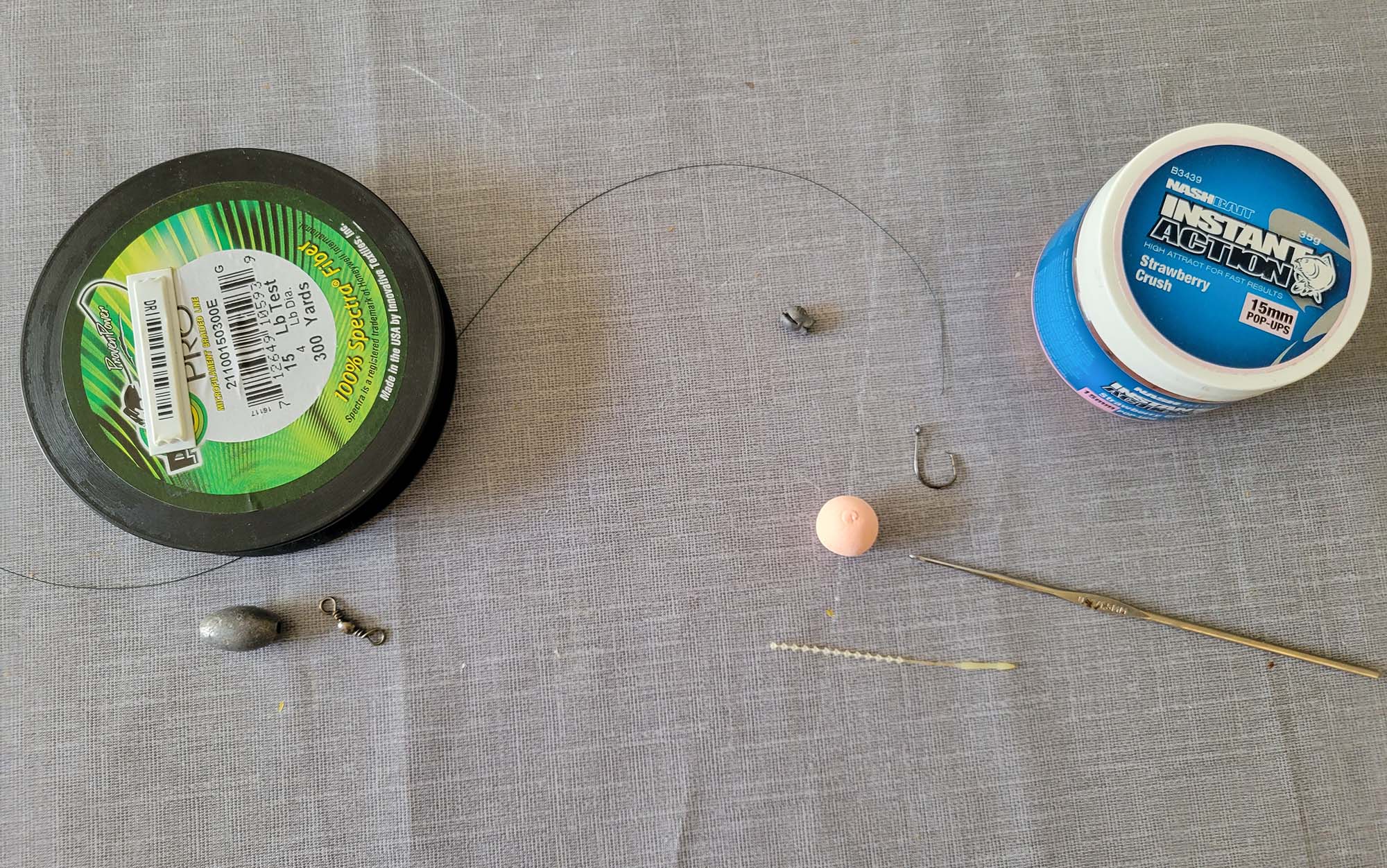
Boilies are small, round pre-made dough balls that can be impregnated with any and every flavor under the sun. As with the field corn, Huffman insists that fruity flavors work best. While the savory flavors do work, they often catch more catfish than carp, and result in smaller fish.
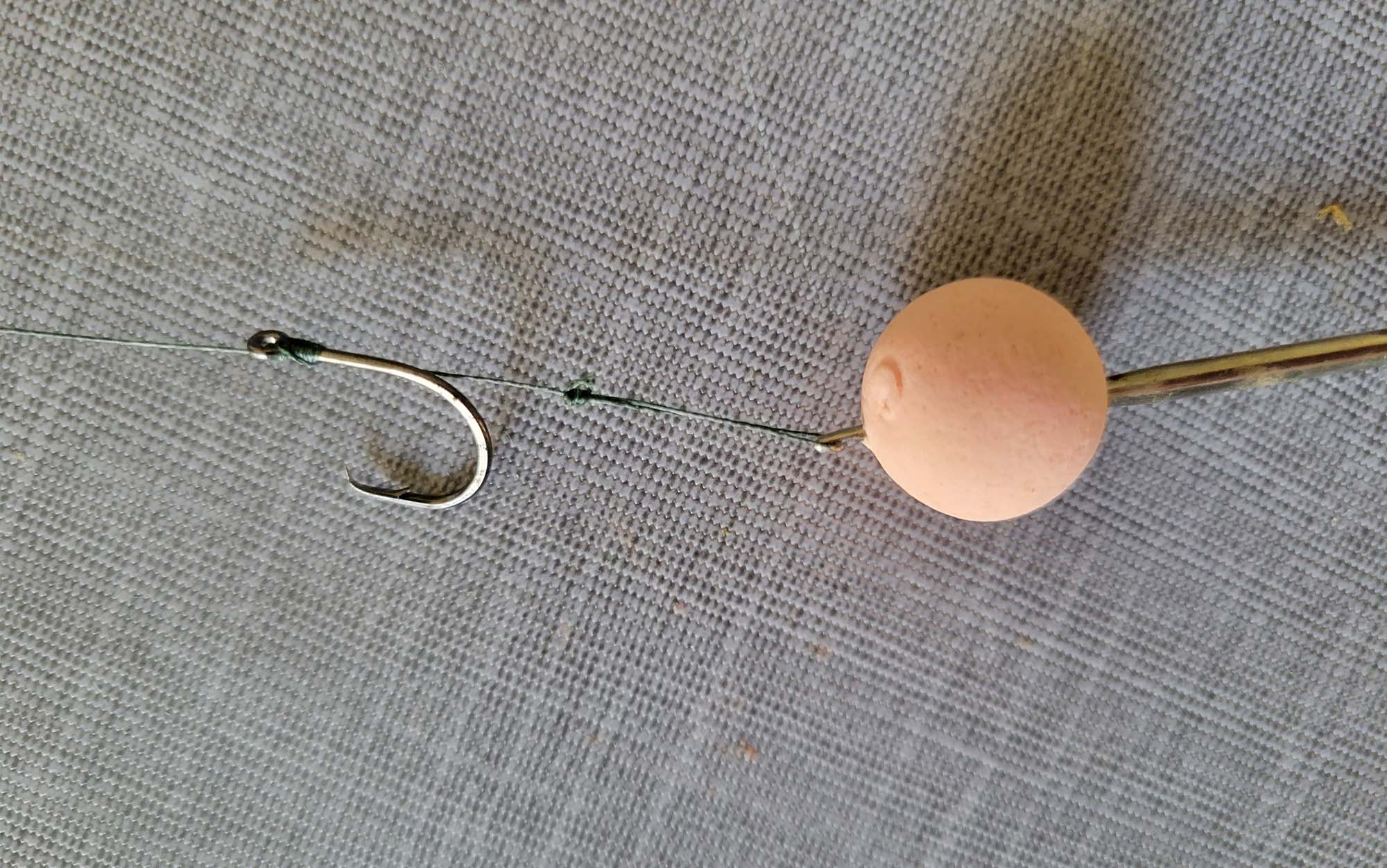
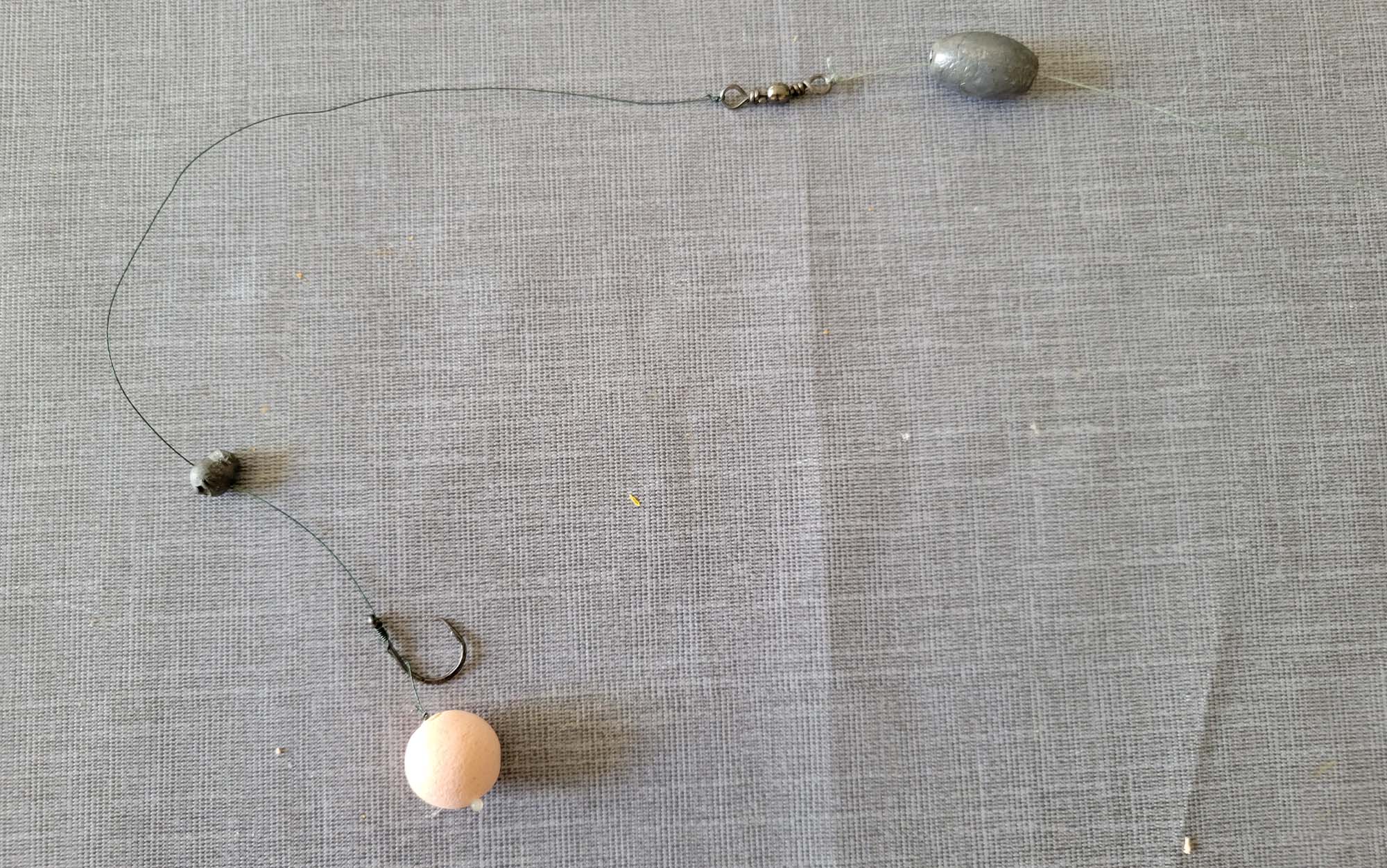
A simple hair rig setup with swivel and sinker will do the trick. Boilies also come in floating and sinking options, eliminating the need for a floating element to keep them off the bottom in weedy or muddy water. One important note that Huffman brings up is that fish are not naturally used to seeing or feeding on boilies. This means it’s very important to chum with them for a few days leading up to fishing in an area.
Best Quick and Easy Bait: Del Monte Canned Corn
Best Quick and Easy Bait
Del Monte Canned Corn
Why It Made the Cut
If you’re looking for a simple and easy carp bait, try a basic can of corn right off the shelf. Cheap and accessible, anyone looking to target carp for the first time can grab a can and go.
Key Features
- Found in every grocery store
- Requires very little work to use effectively
Pros
- Cheap
- Extremely easy to find
- No prep work
- No complicated rigging
Cons:
- Not durable
- Catches smaller fish and more bycatch
Product Description
Canned corn may be the most well-known carp bait. While the field corn is superior in a number of ways, the simple pre-canned variety has its place in the carp anglers’ tool kit. Huffman notes that canned corn is more effective when threaded directly onto the hook, eliminating the need to use a hair rig. Be sure to thread enough pieces onto the hook to cover it entirely. Like the field corn, you can also enhance the effectiveness of canned corn by soaking it in Kool-Aid, although it doesn’t absorb it quite as well as the boiled variety.
While simple and effective, canned corn does have its downsides. Most notably, it lacks any durability, which means that it easily falls off the hook or is picked apart by smaller fish. To that end, Huffman also points out that canned corn tends to catch smaller fish and random bycatch. Turtles and bluegill seem to be especially fond of it. That said, if you’re looking for a good carp bait in a pinch, canned corn is the way to go.
Best Live Bait: Maggots, Mealworms, Wax worms
Best Live Bait
Maggots, Mealworms, Wax worms
Why It Made the Cut
Live bait, particularly maggots, adds a unique element to the traditional carp rig: movement. While most anglers correctly assume carp feed primarily by scent, the visual element of your bait should not be overlooked. Using live maggots can add just that right amount of wiggling action to draw a carp in that might otherwise ignore a stagnant bait.
Key Features
- Relatively inexpensive
- Available at well outfitted tackle shops
- Movement
Pros
- Unique presentation
- Lively action gets fishes attention
Cons
- Difficult to find
- More bycatch
Product Description
Anywhere from 1-3 inches long and coming in a variety of colors, many tackle shops still carry maggots (particularly in regions where trout fishing is common). If maggots are unavailable, common baits such as wax worms or mealworms will also do the trick. You can also snag a cup of these wiggly wonders at your local pet store, as they are common food items for pet reptiles.
Regardless of which type of worm you acquire, the concept and rigging remains the same. You will use a similar size bait hook as you would for corn or boilies, threading 2 to 3 worms onto the hook so that they protrude at the bend. You should thread them through the body from top to bottom, just behind the head, so as to create a wriggling pile of wormy fingers that extend out and move enticingly. The worms can be set up on either a common bottom rig with a sinker or hung beneath a float to increase visibility. One trick Huffman shared that can help improve the maggots’ effectiveness is to use a “pack bait” to build them out. His favorite is a mix of panko and creamed corn, but pre-made varieties are available online.
Once the worms are rigged, take your pack bait mixture and compress it around them to create a heavy ball of bait. Once you cast this out, the pack bait will disperse around the worms creating a large area of scent and drawing carp in. The dissolving pack bait provides a less filling meal and the carp will be looking for a more substantial food item nearby. Hopefully they’ll see your wiggling worms and take the bait.
Most Durable Artificial Bait: Korda Pop-up Maize
Most Durable Artificial Bait
Korda Pop-up Maize
Why It Made the Cut
While the occasional carp is caught on an artificial lure, the vast majority of carp angling is done with natural baits. While they have plenty of advantages, natural bait does have one big disadvantage: It runs out. Enter artificial corn.
Key Features
- Resembles a natural piece of corn
- Durable
- Efficient
- Wide variety of colors, scents, and buoyancies
Pros
- Extremely durable
- No prep work
- Wide range of colors and buoyancies
- Good for combining with other natural baits
Cons
- Hard to find in stores
- Unnatural
- Too expensive to chum
Product description
The best carp baits are the ones you have on hand. This natural looking and smelling alternative to real corn provides anglers a unique bait option that doesn’t require all the hassle or mess of most natural baits. Korda produces Pop-up Maize in a seemingly endless array of colors and scents, allowing you to experiment and find what works best in your area. The fake corn can be rigged a number of ways, but the most effective is to use a hair rig just as you would with natural corn.
Additionally, the corn comes in both floating and sinking varieties, letting you present at any level in the water column without having to add extra flotation to your rig. They can also be used in combination with natural corn or boilies, and double as an excellent alternative to a traditional stopper on a hair rig. This allows you to not only increase the durability of your bait but enhance the presentation by removing as many unnatural elements as possible.
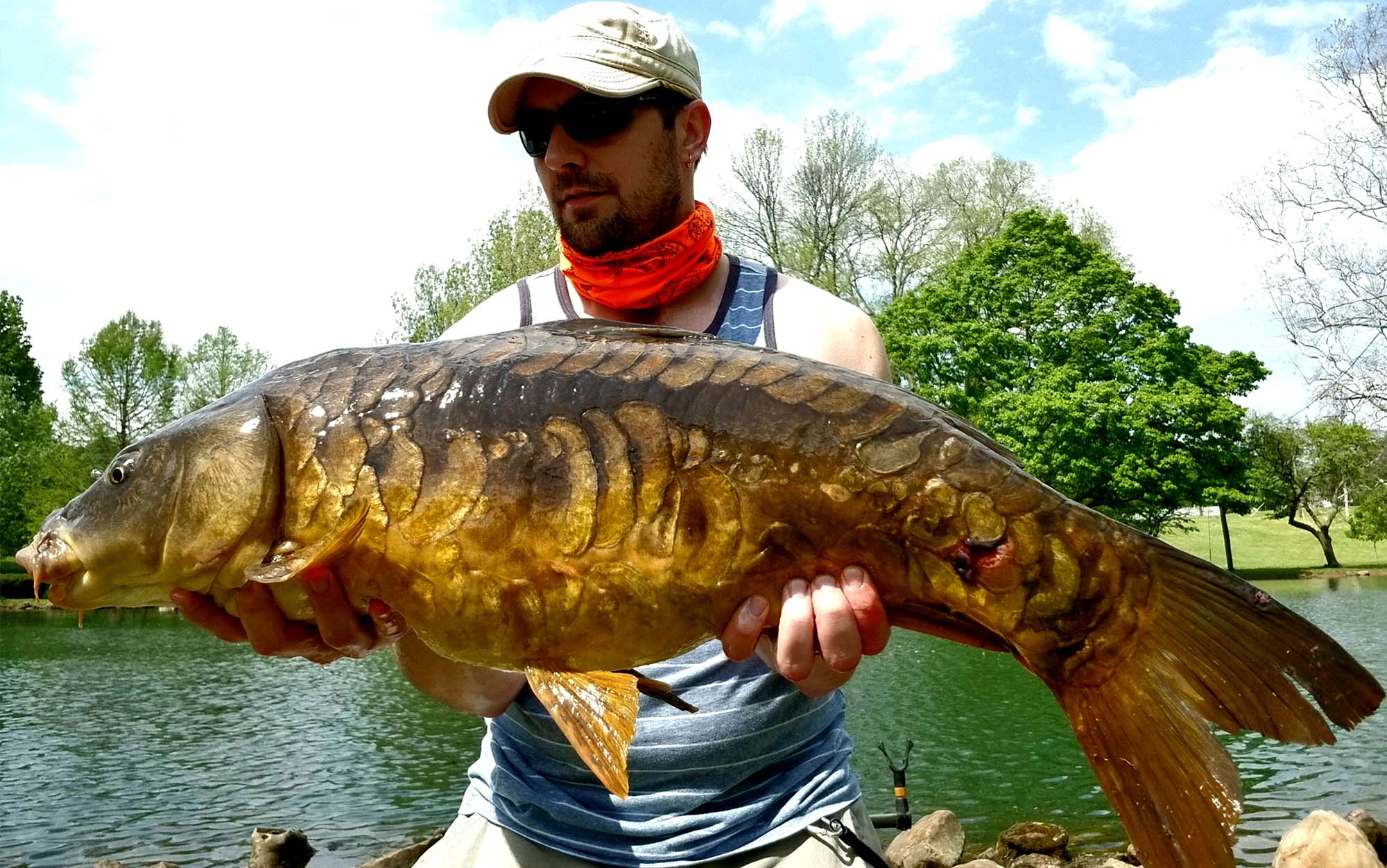
FAQs
An essential component of carp fishing is chumming. Most popular carp baits, whether it be corn, boilies, or otherwise, are not naturally found in carp habitat. The fish must be trained to look for them. The process of chumming creates a feeding station where carp will be looking for food resembling your bait. Huffman is adamant about chumming for an extended period of time in the area you’ll be fishing. This can be anywhere from one day before, to as long as several weeks. One very important note: Make sure you check local laws and regulations regarding chumming in your area. Many places have strict regulations regarding the practice, so it’s best to know before you go.
This is a complicated question, and the answer can vary drastically based on where you are fishing. However, generally speaking, the best spinning rods for carp should be very long and sensitive, a medium fast spinning rod somewhere in the 9 to 12 feet range. You’ll want to use spinning gear with a very large spool, preferably a baitrunner style reel. This allows for carp to take the bait and run line without feeling any tension and spitting the hook, which carp are very good at doing. The reel can be spooled with monofilament or braided line, but Huffman prefers braid in the 20-30 pound range. The best fishing line for carp is sensitive and light enough to cast well, but provides a degree of durability should the fish get buried in cover.
The common carp is the most prolific and likely carp you’ll encounter. There are a number of other interesting and unique looking variations, most notably the mirror carp and the leather carp. However, most carp species descend from the classic common, even the brilliantly colored and highly prized Koi. That said, you could also luck into a Grass Carp (White Amur) or a species of Buffalo (a native fish and not actually a carp), both of which are strong in both resemblance and angling quality.
Final Thoughts
While carp fishing is often looked down upon in the U.S., it’s finally starting to gain the reputation it deserves. The tips and techniques shared in this article may seem complex, but as any seasoned carp angler will tell you, they are just the tip of the iceberg. When it comes to the best carp baits, there is an endlessly complex variety of rigs and presentations that can be used. The techniques shared here will provide a great jumping off point to help you chase one of the most underrated gamefish in North America. Whatever bait you decide to use to attempt targeting carp, once that reel starts screaming, you’ll be glad you gave it a shot.
